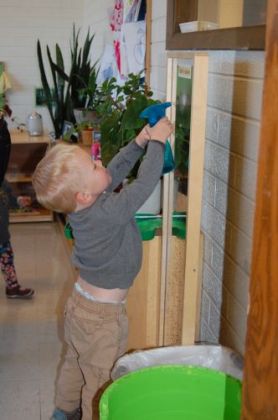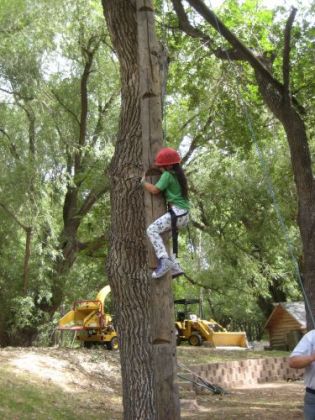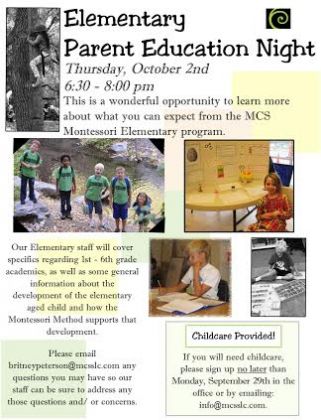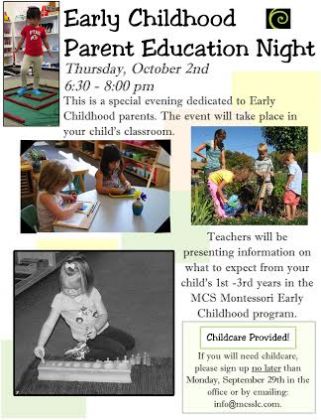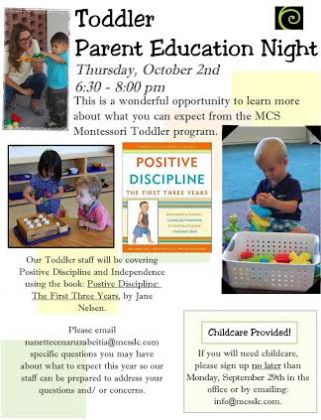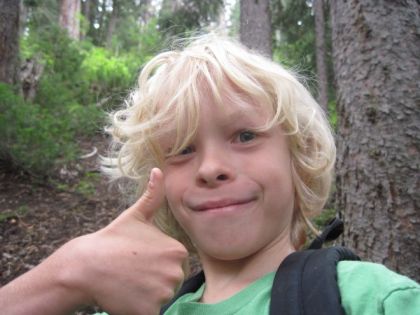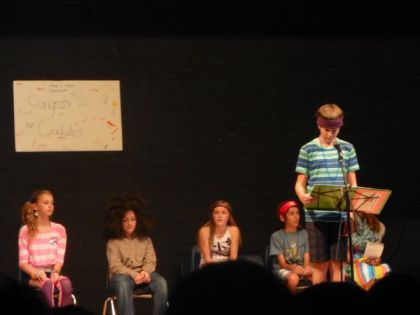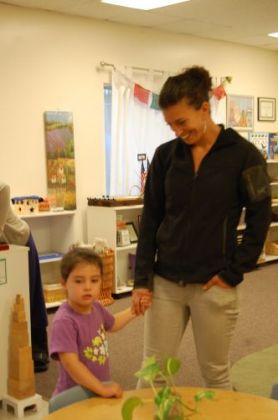What is it that every child needs that parents don’t seem to have? (Life time passes to
Disney World and unlimited shoe budgets don’t count!) You can fill in your own blanks.
It is something that a Montessori school can help offer. Of course a good education
comes to mind but that is not even the greatest gift your Montessori school can offer.
What your child needs most is one of the attributes that makes a Montessori school so
special. Yes, it is a safe place emotionally; a challenging place intellectually; and a caring
place socially. It is designed for your child and populated with adults who care. These are
all good things but not the greatest thing your child receives. And your final answer is?
Time! Time is our most treasured commodity – we always seem to be running out of it.
We always seem to be talking about “making” time for things when in reality we need to
“take” time – making it a priority. And to make it even more challenging for us, it is not
just “time” but what you do with time that creates its value.
With time an acorn becomes an oak, a tadpole becomes a frog, a caterpillar becomes a
butterfly and a child becomes — What? We are prone to say “an adult” but even that is
not the ultimate destination of time. It is what you do with time!
If time were the only factor an acorn would become a bigger acorn, a tadpole a
bigger tadpole etc. but it is time and attention (what you do with time) that begins
this extraordinary transformation. Your child is already DNA’d with the marvelous
characteristics of who they are to become – right-handed, left-handed, artist, musician,
scientist, doctor or Indian chief. It takes time (and observation) for these unique character
qualities to blossom and become apparent. And that is what your school does – is to take
time to know your child, to take time to open the world of learning and to take time to
watch your child grow and learn and to be transformed.
If your child doesn’t have time to develop and there is no one there to observe and
encourage development then your child may miss the opportunity to create the person he
or she was designed to be. A Montessori school gives children time to discover – not only
the marvels outside of themselves but the marvels of their personality and passions within
themselves. Montessori offers a child a window on the world and time to take it all in. It
takes time to flourish.
There is no need to rush learning. The Montessori secret is that given enough time
children will learn everything they need. And given enough time they will joy in the
discoveries because they will not be pressed for time and they will go on to master what
they have learned.
So how do we deal with the pressure of time in regard to our children? Take a deep
breath! In fact, you may need to take many of them as you set your clocks back
figuratively and literally. Figuratively, scale back your time expectations for your child.
Being the first to walk, the first to talk, the first to read or the first whatever has nothing
to do with the marathon of life. It takes time to build a solid foundation. The gift of time
doesn’t mean you lower your goals and expectations. It means you give them the gift
of time to be children; the gift of time to explore and discover; the gift of time to make
mistakes, to recover and to learn from those mistakes. Give them time to discover their
strengths and passions. Give them time to build the adult they will become.
Take another deep breath and set your clocks back literally. You have a choice – you can
do for your children (and make them dependent) or you can give them more time (more
time than it certainly would take you) to get dressed, brush their teeth, eat breakfast, feed
the dog, clean their room etc. Part of time is patience – or is that patience is a part of
time?
They want to do it for themselves. They want to become independent. Give them the
time to achieve the ability to be independent (self-governing, self-ruling) and to do that
you have to give them the gift of more time. The ability to do things for yourself, to
accomplish, and to finish the task is what builds real confidence and real self-esteem.
A Montessori school is successful because it is governed by the observation of the child’s
needs and not the pressure to achieve according to the clock or the calendar. When the
teacher does not seem to share your concern over your child’s progress it is not from a
lack of concern but out of experience and observation knowing that given the time your
child will blossom and learn all that is needed.
The great gift of childhood is the gift of time!

